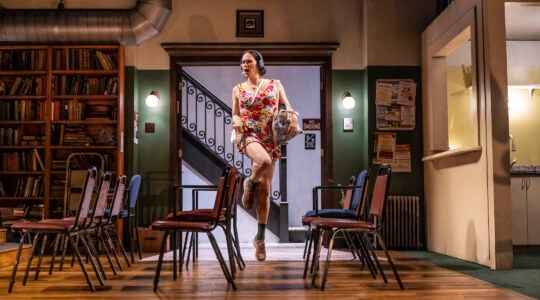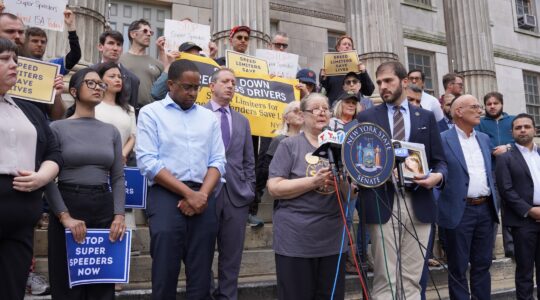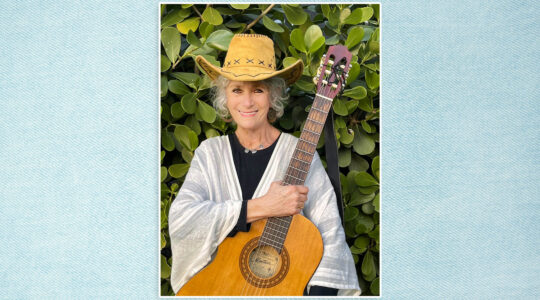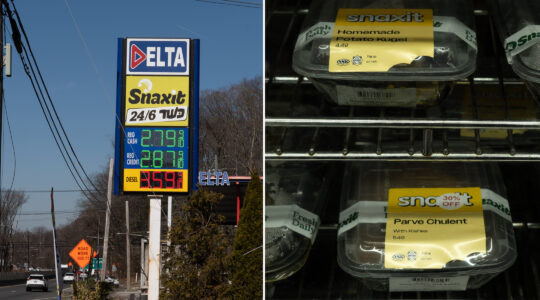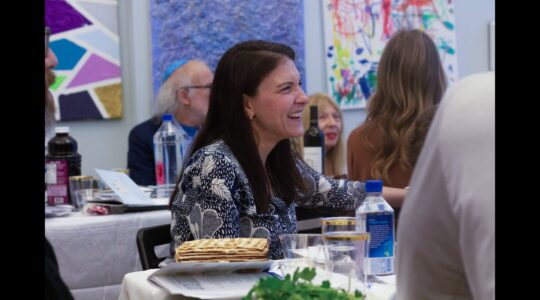Rabbi Michael Paley, 65, will be a terrific elder someday. He’s travelled the Seven Seas of the Jewish adventure. His soul has docked in such ports as the iconic Havurat Shalom, one of the first counter-cultural davening communities; the Reconstructionist Rabbinical College (dropping out when they thought he was too concerned with davening and kashrut); ricocheting to Orthodoxy, and Rabbi Chaim Brovender’s Yeshivat Hamivtar; along with graduate study in Jewish and Islamic philosophy at Temple University. He was privately ordained by the legendary Reb Zalman Schachter-Shalomi; then served as chaplain at Dartmouth, where he founded the Conference For Rural Jews, and at Columbia University, where, as an urban Jew, he faced off against Al Sharpton over an alleged assault against a black student in what he later realized was Sharpton’s “rehearsal for the Tawany Brawley hoax.” He came to UJA-Federation of New York in 1997, where he was scholar-in-residence and director of the Jewish Resource Center, until the end of last year.
“I enjoy crossing boundaries,” says Paley. Soon he’ll be crossing the ocean, working in Budapest for the Joint Distribution Committee. The Joint hasn’t given him a title yet, but Paley’s content with the most glorious title that he had all along: “rabbi.”
His north star is “ahavas Yisrael,” the imperative to love all Jews. He always tried to do that. “Actually,” says Paley, “I didn’t have to try, it came easily to me.” He cites a quote, often attributed to Menachem Begin, “I love the Jews I like, and I love the Jews I don’t like.” After all, says Paley, “we need every Jew; it’s all hands on deck.”
‘“I love the Jews I like, and I love the Jews I don’t like….” We need every Jew; it’s all hands on deck.’
On a Friday night at Havurat Shalom, in Somerville, Mass., he first encountered the great chasidic teacher, and later the founder of the Jewish Renewal movement, Reb Zalman Schachter, sitting on the floor, singing a niggun that lasted an hour. Reb Zalman was a revelation. Those were the days when it seemed to Paley “that the only people who got any real Torah learning were in the Orthodox world.” A few years later Reb Zalman took Paley to meet the Lubavitcher Rebbe. Paley remembers being “transformed, drained, exhausted, unlike any meeting I’ve ever had. He asked me about physics … he could have asked me anything. He just took my mind and sped it up.” Paley later said time seemed to stop, as if on a fantastic first date where you look at your watch and it’s suddenly four in the morning.
When Rabbi Paley was hired as UJA-Federation’s director of synagogue and community affairs, he recalls, his charge was “to work on healing the relationship between the federation and synagogues.” UJA-Federation traditionally dealt with charities on the macro level, such as Israel and social services (i.e. hospitals), rather than the micro of neighborhood synagogues that were seen as sources of funding, not recipients. But synagogues, says Paley, began looking to federations for help. The Jewish population in certain areas was declining and aging. “I did a lot of symposia on the nature and future of synagogues,” says Paley. “We did a project in northeast Queens about how synagogues could work together, across denominational lines.” Meanwhile, UJA-Federation began to consider the necessity of working on the Jewish continuity front. “That was the whole thrust of John Ruskay’s [work on continuity]; I was part of that thrust,” says Paley.
Paley increasingly did Jewish teaching at regional groups and local synagogues. “The fundraisers at federation,” says Paley, “thought this was a good thing to do, a product [teaching] that we can give to synagogues.” Paley’s job and title evolved into scholar-in-residence. UJA-Federation had previous “house rabbis,” but their primary focus had been more administrative than educational. Paley recalls “teaching ‘big donors,’ sometimes at federation, sometimes at people’s houses,” as well as “people who were making significant decisions at federation.”
Federation’s agenda might have been discussed, but the priority was to “build UJA as a place of learning.” A regular schedule of study was a form of engagement; “then you might get engaged with all sorts of other things, but I never treated the learning as a tool. I believed in education for education’s sake.”
Jews in the UJA-Federation orbit had often been secular, and “learning had always been in the province of the Orthodox,” says Paley. “No one had thought that you might be interested in learning Talmud if you weren’t keeping Shabbos, but Talmud can be really interesting.”
Paley would give classes in everything from “Real Estate and the Jewish Tradition” to Levi ben-Gershon (also known as the Ralbag, or Gersonides), the 14th-century philosopher, “one of the top-10 Jewish philosophers of all time. We have this whole library of imagination.” He wanted to bring that to UJA-Federation. Reb Zalman, says Paley, showed that non-traditional Jewish life “didn’t have to be shallow. If it’s shallow, it won’t last.”
Historically, UJA-Federation, a tikkun olam organization, reflected Jewish identity rather attempting “to engender a rich and avant-garde Jewish identity,” says Paley.” In and of itself, there’s nothing wrong with tikkun olam. But social action alone isn’t enough to save Jewry, and that is not the job of tikkun olam. Only in the last 20 years, did we think we should be doing things for Jewish identity,” through a commission on identity, helping day schools, Hillels, summer camps, Israel trips or a department on Jewish life.
“There’s only one place to be for the Jewish revival in Eastern Europe and that’s Budapest.”
Paley appreciated his time at UJA-Federation. “Every day I loved it. I felt proud. I can only say good things about the huge amounts of generosity that Jews were willing to give — $200 million a year.” Paley understood that Judaism never condemned wealth or exalted vows of poverty but exalted the ideal of “balancing prosperity with generosity. Without generosity we’re left with greed.” Wealth was only validated when it led to alleviating “the abandonment of the needy.”
Paley is already enthusiastic about going to Hungary for the JDC. “There’s only one place to be for the Jewish revival in Eastern Europe and that’s Budapest,” he said. He intends to work with lay leaders and communal organizing since “most of the institutions don’t have boards, or well-functioning boards.”
“The Jewish community was never really Hungarian, they were Hungarian Jews,” said Paley. “The cab driver will tell you, ‘that is my shul over there;’ he wants to tell you, ‘I’m Jewish.’ A real estate guy will say, ‘You’ll want a first-floor apartment for Shabbos.’ He’s telling me, ‘I’m Jewish, too.’ We wondered if our neighbors were anti-Semitic; then they brought us eggs, ‘you’ll want these for Pesach.’ A cab driver had the Kitzur Shulchan Aruch (a Jewish legal text) in his glove compartment. They never quite assimilated into Hungarian society because they never aspired to that. They are in search of an identity that has to be essentially Jewish.”
“They want to bring something else to the narrative, a rebirth, a reawakening.”
On Oct. 23, the holiday in honor of the 1956 revolution against Communism, Paley went out and saw “thousands of people in front of parliament. We were having a great time. People are waving signs, wearing costumes, there are big trays of goulash — we don’t eat it, but it’s fun to see. A guy in a little feathered Hungarian hat comes over to me and says, ‘Are you Jewish? You know, this is the anti-Semitic rally. You should go to the rally at the Elizabeth Bridge.’
“Is Hungary anti-Semitic? It was always anti-Semitic. But Hungarian Jews don’t want to leave Hungary,” realized Paley. “They want to bring something else to the narrative, a rebirth, a reawakening.”
He may seem too youthful to be an elder, but, as with love, you look at your watch and suddenly it’s four in the morning. He’s in love with the Jewish people. Elders often are.
The New York Jewish Week brings you the stories behind the headlines, keeping you connected to Jewish life in New York. Help sustain the reporting you trust by donating today.
